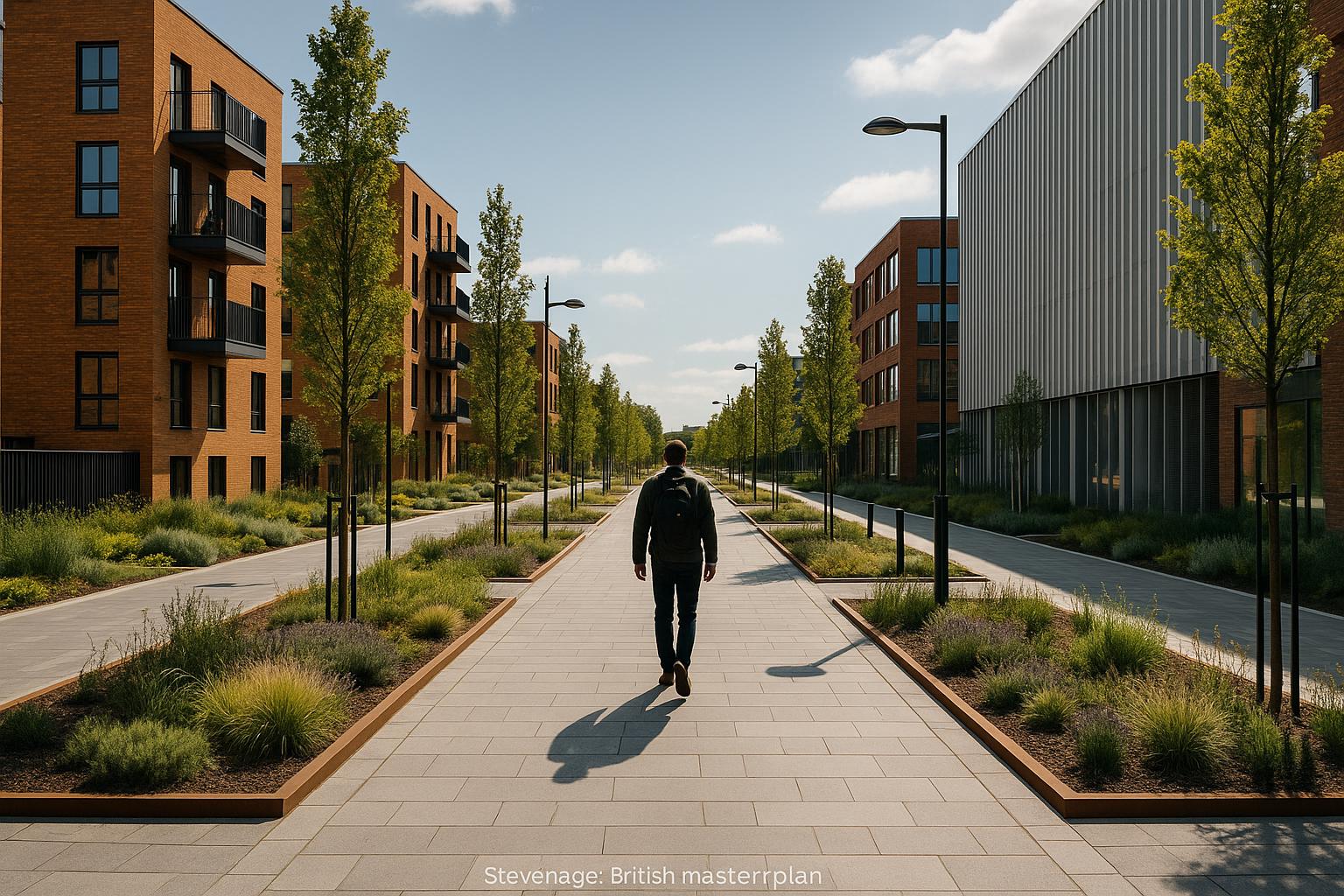Baroness Taylor of Stevenage, the government housing minister in the House of Lords and former leader of Stevenage Borough Council, has underscored the critical role that masterplanning and design thinking play in the success of new towns. Speaking at a panel event during the 2025 Labour Party conference, she highlighted Stevenage as a prime example of effective placemaking. “You need key components to make a town work and the first thing you need is a proper masterplanning approach, because you’ve got to make sure that you include the infrastructure that’s going to support that community going forward for the future,” she stated, reflecting on the town’s ongoing regeneration journey.
Stevenage’s £1 billion regeneration programme, overseen by Stevenage Borough Council and the Stevenage Development Board, echoes this principle. The extensive initiative aims to revitalize the town centre by incorporating new housing, retail spaces, and leisure facilities, promoting a sustainable and vibrant community. This regeneration effort aligns with the ambitions conveyed by Baroness Taylor, who has been deeply engaged with the town's development for decades, both as a council leader and now as a housing minister. The transformation includes improvements such as the opening of the new Town Square and North Block, which notably blend the town’s architectural heritage with modern amenities, supporting flexible workspace and community uses. These developments demonstrate how targeted masterplanning can serve as a catalyst for rejuvenation and economic vitality.
The emphasis on masterplanning and placemaking at Stevenage is resonant with wider government ambitions concerning new towns. The New Towns Taskforce has recommended a series of locations proximate to major urban centres like London, Leeds, Manchester, and Milton Keynes—areas deemed to have the economic, social, and transport infrastructure necessary to support new communities. RIBA president Chris Williamson praised the exemplary design and architecture seen in towns such as Milton Keynes, which was built with a clear masterplan from 1967. He stressed that the architectural profession must be central to delivering well-designed housing that avoids the pitfalls of monotonous volume-building, which ignores local context and environmental factors.
Government housing minister Matthew Pennycook further articulated the need for ambition and scale in the new towns programme, although he was less clear about direct government funding. Instead, he indicated that delivery might rely on locally led development corporations or public-private partnerships, pointing to the London Legacy Development Corporation and Stratford as models. Pennycook noted that no final decisions have been made on the precise locations or the number of new towns, emphasizing a process involving environmental assessments to ensure the best possible outcomes before committing to spades in the ground.
Retrofitting existing homes also featured prominently at the conference, highlighting its increased political priority. The government’s £13.2 billion warmer homes plan, championed by energy minister Martin McClusky, aims to reduce fuel poverty and upgrade homes to be more energy-efficient. McClusky acknowledged the complexities of government silos but expressed hope that interdepartmental mission boards could help coordinate retrofit efforts with broader climate and net zero goals. This presents a complementary priority alongside the new towns initiative, addressing the need to enhance existing housing stock while also planning thoughtfully for new developments.
Looking ahead, the combined focus on masterplanned new towns, quality architectural input, and large-scale retrofit programmes underscores a holistic approach to addressing the UK’s housing crisis. Baroness Taylor’s extensive experience in Stevenage’s transformation offers a practical case study in the benefits of integrated planning, community-focused design, and sustainable regeneration. Meanwhile, the newly invigorated conversation about new towns—pursued with an eye to location, infrastructure, and design quality—reflects a government ambition to both build and retrofit homes with lasting value.
📌 Reference Map:
- Paragraph 1 – [1], [4], [5]
- Paragraph 2 – [1], [2], [3], [6]
- Paragraph 3 – [1], [2], [3], [4], [1], [5]
- Paragraph 4 – [1]
- Paragraph 5 – [1]
- Paragraph 6 – [1], [4], [5]
Source: Noah Wire Services
